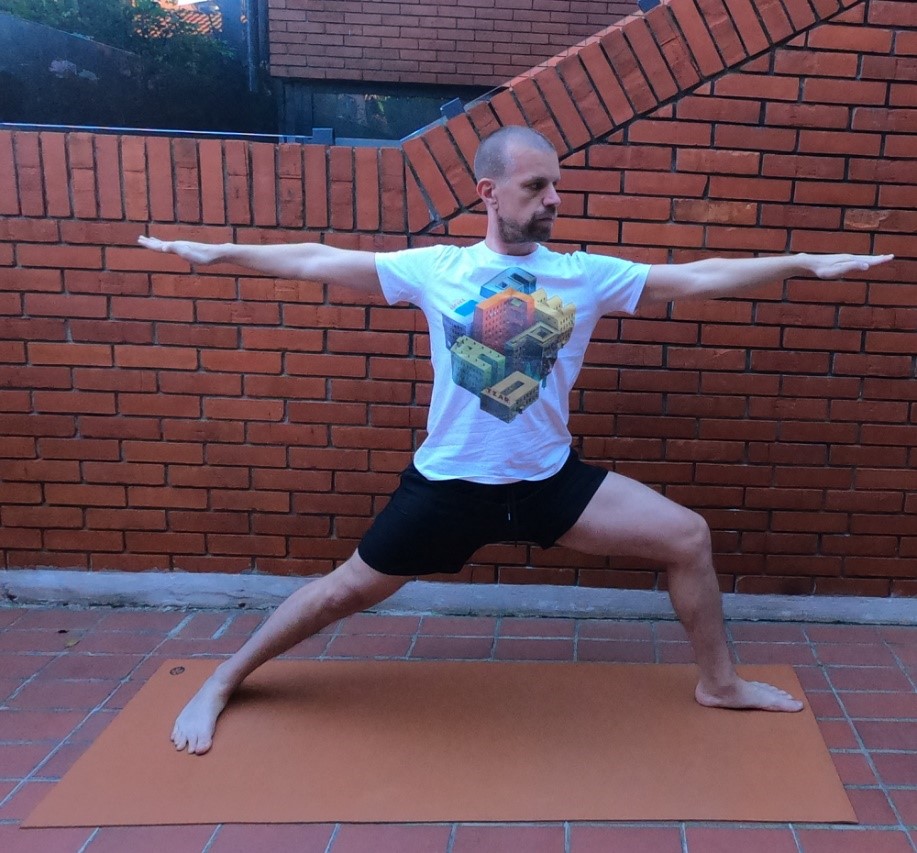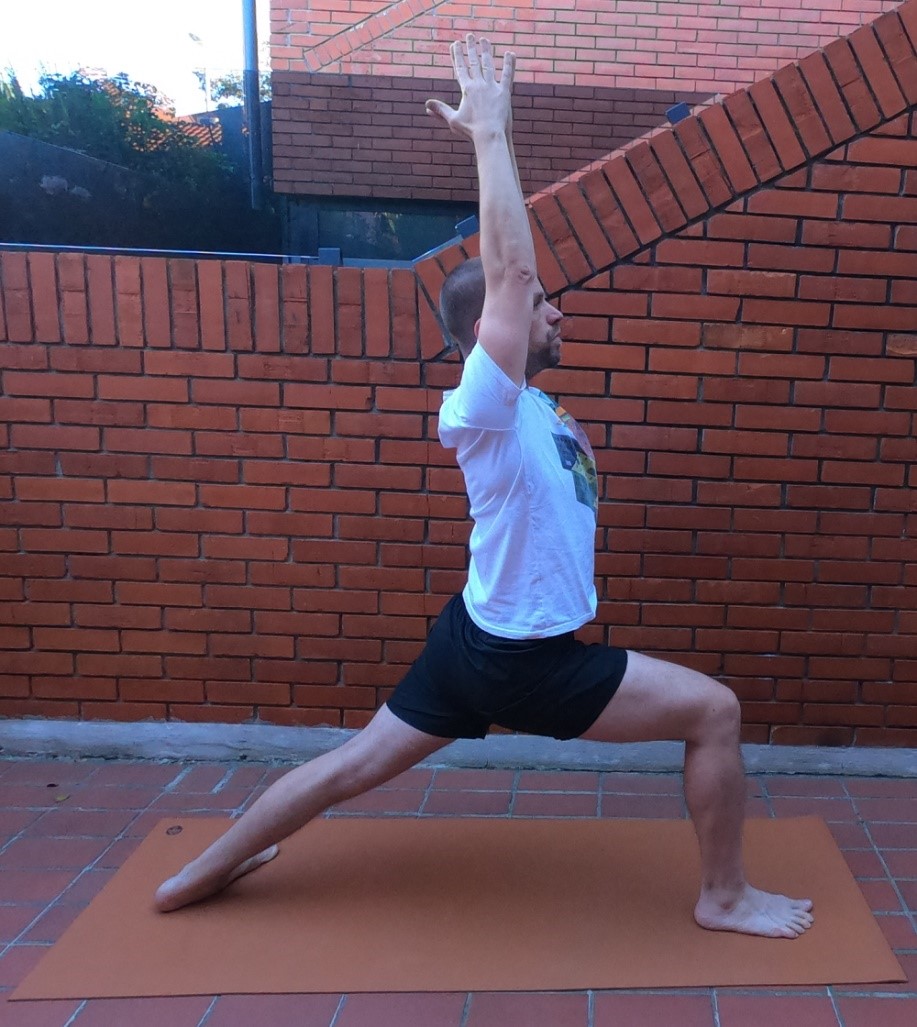These two yoga poses, Virabhadrasana A&B, probably belong to the group of poses for which yoga is very well known. Along with Downward Facing Dog and Upward Facing Dog, these poses also known as Warrior A and Warrior B are familiar to most people who don’t practice yoga but are still familiar with it in some way.
Practice
Both poses are practiced in different styles of yoga, so they cannot be tied exclusively to one style. Of course, according to the style in which they are practiced, we can talk about whether they are practiced more as a static or dynamic pose.
For example, when we mention these poses within Vinyasa and Ashtanga yoga, we consider them as part of a dynamic sequence. Both poses belong to the group of standing poses.
While the sequence in Vinyasa yoga is entirely dependent on the instructor’s or teacher’s creativity, the poses in Ashtanga yoga follow a predetermined sequence. Sun Salutations A and B are important parts of Ashtanga yoga, and these two poses are an important part of them.
In hatha yoga, these two poses are usually entered from the mountain pose. They mostly merge into one mini-sequence.
As far as Warrior 1 is concerned, when practicing this pose, the chest and hips, strengthening of the arms, back, and legs, and fine stretching of the neck, stomach, and legs occur. If this pose is entered from the pose of the mountain, in that case, a lunge is made with the leg, which in this case does not have a landing function. So, if the right leg is landing, the left leg is stepping back. It is recommended that the lunge be at least three to four feet long. The toes of the landing leg are turned forward, so at ninety degrees, the foot of the leg with which the backward step was made rotates inward at a maximum of thirty degrees. This is important for the support of the entire upper body. If the foot was turned at ninety degrees or rotated outwards, the balance of the practitioner would be called into question.

The upper part of the body during the practice of warrior 1 implies that the hips are in line so that they are fully open forward, or rather turned towards the foot of the landing leg. If you don’t have full hip rotation, this is where a block placed under the heel of your stepping foot can greatly benefit you.
It also means that your legs are active the entire time you are performing the pose itself. The full pose means that the thigh of your landing leg is completely in line with the yoga mat. Of course, if this is not possible in the beginning, it is perfectly fine for the thigh of the landing leg to have a slight upward trajectory. If you are aiming for a full pose, then it is important that the knee of your landing leg is exactly above the ankle joint. You’ll know you’ve done a good landing leg position if your knee only covers the big toe of your landing leg while all the other toes are visible. Otherwise, you are not in a complete pose. The leg with which you stepped back is fully locked; that is, every muscle in that leg is activated.
The arms in Warrior 1 are extended upwards with palms together. The space between the shoulder blades opens up so that the shoulders go as far as possible from the neck. The gaze is directed to the tip of the nose if looking forward, or it is directed to the thumbs of the hand if the gaze is directed upwards.
When looking at Warrior 2, the leg position remains the same. Due to that fact, the transition from Warrior 1 to Warrior 2 is essentially a completely natural transition. In Warrior 2, the gaze is focused on the fingertips of an outstretched hand.

In Warrior 1, the hips are in a fully aligned position, or rather, they are fully open. When transitioning from Warrior 1 to Warrior 2 occurs, the hips rotate to the side of the leg you stepped back with. So, if your right leg is landing, you rotate your hips to the left. With rotation, you stop when your hips are in line. As in Warrior 1, the legs are fully active.
As for the position of the hands, there is a lowering of the hands to ninety degrees, with the palms facing down. The hands are in line with each other.
Looking at both poses from experience, the much easier pose for someone just starting out in their yoga practice to do is Warrior 2, even though it stems from Warrior 1.
Benefits
Practicing Warrior 1, you work on opening your chest, shoulder blades, and shoulders, gently stretching your arms, neck, and stomach. We should certainly not forget about stretching the groin.
The pose itself is great for strengthening your ankles, calves, and thighs. The mere fact that your spine is constantly stretched during this pose leads to the strengthening of the back muscles. You also strengthen the arms that are fully extended upwards during the pose.
Warrior 2 has the same benefits as Warrior 1, except that it stimulates the organs of the abdominal cavity to a greater extent than Warrior 1. Warrior 2 is more effective in dealing with back pain. This is especially noticeable in pregnant women. I recommend this pose to people who have problems with sciatica, osteoporosis, and carpal tunnel syndrome.
Both poses are great for exercisers with flat feet. Both poses affect the increase in endurance.
Conclusion
If you want to practice these two poses for the purpose of your spiritual practice, you should know that both of these poses affect the stimulation of the root and sacral chakras. More precisely, they stimulate mooladara and svadistana.
When the root chakra is stimulated through yoga practice, it leads to the “grounding” of the practitioner. Inner peace is achieved within the practitioner. Getting to a place of inner peace is very important for each of us to grow as people.
When the sacral chakra is open, it helps the practitioner accept themselves and get more done.
By activating both chakras, the practitioner improves his concentration and inner strength and becomes much more focused when dealing with and carrying out parts of everyday life tasks.







